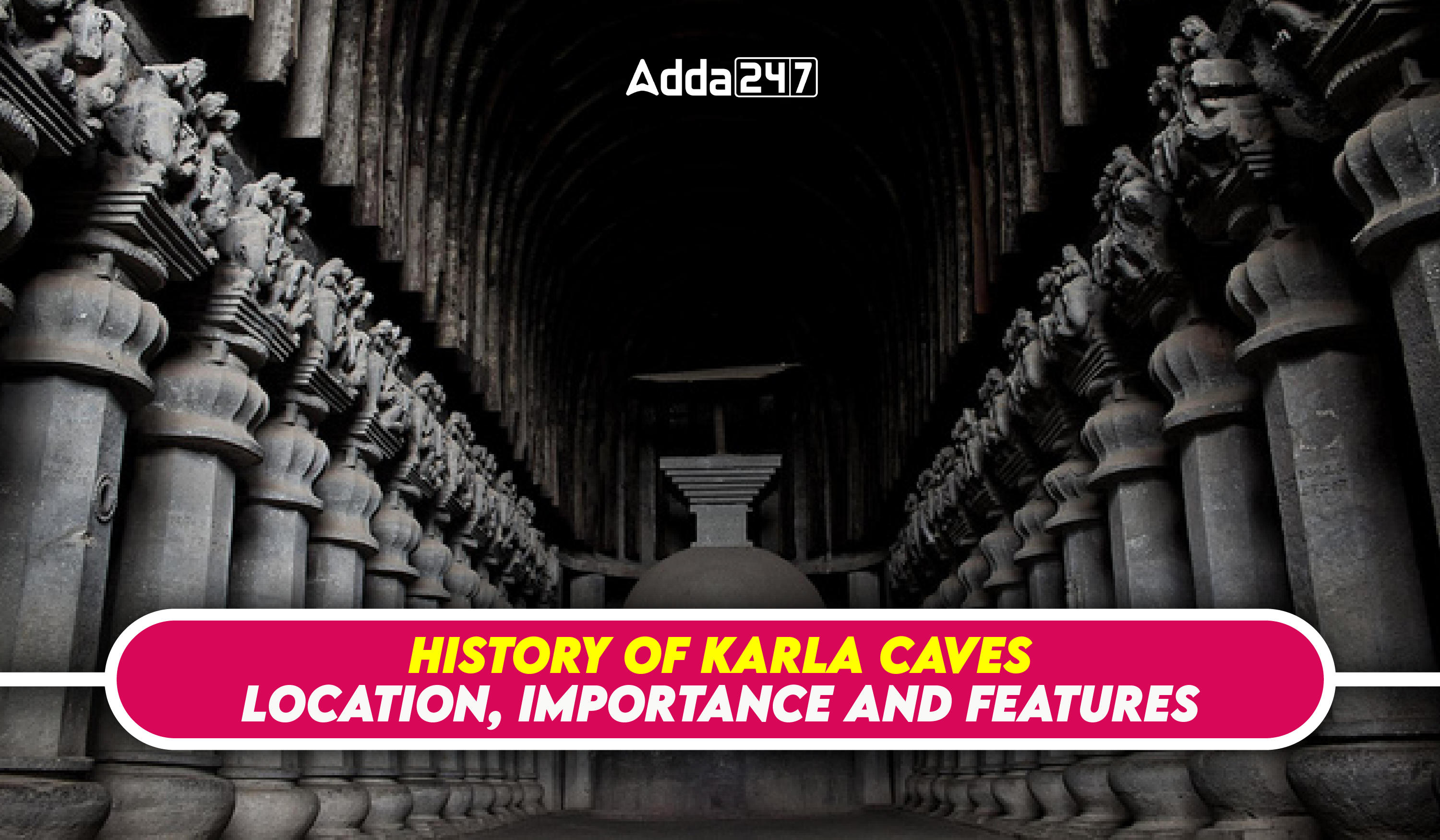Table of Contents
The Karla Caves are a collection of Historic Buddhist Rock-Cuts that were made about the year 200 BC near Lonavala, Maharashtra. The Buddhist monks who constructed the caverns utilized them as locations for prayer and meditation. The caves are well-known for having one of the biggest rock-cut chaitya halls in India. The significance of these caves lies in their ability to illustrate the development of Buddhist rock-cut architecture in India.
Karla Caves History
Buddhist monks are thought to have constructed these caverns for prayer and meditation. The Karla Caves were constructed under the Mauryan Empire and date to the second century BC by historic rock-cut caves in Maharashtra, India. Under the leadership of Emperor Ashoka, the Mauryan Empire was one of the mightiest in ancient India. Being a Buddhist, Ashoka was crucial in introducing Buddhism to India. Buddhist monks chiseled the rock out of the mountainside to create the Karla Caves using just chisels and hammers. The monks lived in cells within the caves, which they also utilized for prayer and meditation.
The enormous hall used for prayer and worship, the chaitya hall, is the most significant aspect of the Karla Caves. The 45-meter-long and 14-meter-wide Chaitya Hall is sculpted from a single rock. Beautiful sculptures and carvings of Buddhist motifs and deities may be seen throughout the hall.
Karla Caves Location
Above the Maharashtra village of Karla, the caves are carved out of the rock. Situated close to Lonavala, Karla is easily accessible via the Mumbai-Pune Hwy. If traffic is normal, the trip from Mumbai takes approximately two hours, while from Pune, it takes less than an hour and a half.
Karla Caves Features
The Karla Caves have the following characteristics:
- These are unique caves constructed during the Mauryan Era in the second century BC, carved out of the rocks by prehistoric Indians using tools like chisels and hammers. Buddhist monks utilized them long ago for living, praying, and worshiping.
- The enormous hall used for prayer and worship, the chaitya hall, is the most significant aspect of the Karla Caves, was used for worship, and is a massive arch that leads to the Karla Caves.
- The arch is embellished with sculptures and carvings representing significant Buddhist religious objects.
- Beautiful sculptures and carvings of Buddhist motifs and deities may be seen throughout the hall. Some viharas, or monastic residences, may also be seen in the Karla Caves. All that is needed to create the caverns is a hillside, chisels, and hammers.
- The complex spans an approximate area of 2 square kilometers and is made up of approximately 16 rock-cut caves. You have to up stone steps to reach the caverns, which are perched on a hill.
- They offer a stunning perspective of the hills and valleys and are encircled by a large number of trees and plants also they offer popular tourist destinations and are regarded as sacred sites by Buddhists.
- It has taken a lot of effort on the part of many to maintain the caverns’ historical and cultural significance.
- Because of its uniqueness, the Karla Caves are safeguarded by the Archaeological Survey of India (ASI).
Karla Caves Importance
- Karla Caves are located in a prime location along an old trade route that linked the Deccan and the Arabian Sea. Between the inland cities and the seaports of Kalyan and Sopara, this roadway encouraged trade.
- The border between North and South India was indicated by Karla’s geographic location. To provide shelter and assistance to traveling traders, Buddhists frequently built monastic complexes close to important commercial routes.
- According to the inscriptions, traders, Western Satraps of Saka descent, and Satavahana emperors provided funding for the construction and upkeep of these caverns.
- Inscriptions found inside the caves list contribute from some locations, including Sopara, Vejamti (Banavasi, north Kanara region), and unknown settlements like Umehanakata and Dhenukakata. Numerous Yavanas (Greeks) from Dhenukakata were among these contributors.
- Among the prominent donors listed in inscriptions are Usavadata and Vasisthiputra Pulumavi. The inscription of Pulumavi, which dates to his 24th year of rule (154 AD), gives Karla’s ancient name as “Veluraka.”
What distinguishes Karla Caves from other types of caves?
Karla Caves are distinguished from other caves by two main features: the chaitya griha and the lightning. The most notable feature of the Karla Caves is the lightning that can be seen within. The rock has large windows etched into it to allow direct sunlight to penetrate in the right tone, highlighting the sculptures and carvings’ already beautiful outlines. The third item is the Ekvira Temple, also known as the Karla Temple. One of the oldest temples in India, the Ekvira Aai Temple is a major draw for visitors to Lonavala. The temple was built throughout two distinct periods: the second century BC to the second century AD, and the fifth century AD to the tenth century AD.
The Karla Caves are among the oldest and most elaborately designed rock-cut temples in India. They were the height of Indian rock-cut buildings in that era. While not as well-known as Ajanta and Ellora, these caverns are equally magnificent. The advancement of Indian art has been greatly influenced by the creative and architectural accomplishments of Karla Caves. This set of caves has been declared a protected monument by the Archaeological Survey of India.



 Bishnoi Movement - History, Objective, a...
Bishnoi Movement - History, Objective, a...
 Neolithic Age- Agriculture, Tools, Potte...
Neolithic Age- Agriculture, Tools, Potte...
 Position of Women in Vedic Age: Societie...
Position of Women in Vedic Age: Societie...




